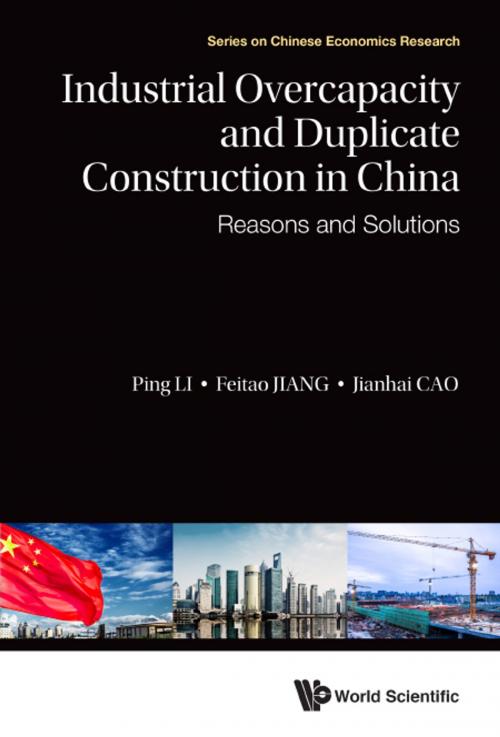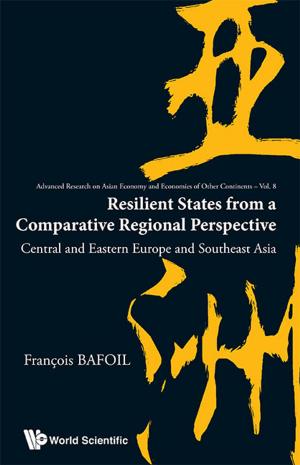Industrial Overcapacity and Duplicate Construction in China
Reasons and Solutions
Nonfiction, Social & Cultural Studies, Political Science, International| Author: | Ping Li, Feitao Jiang, Jianhai Cao | ISBN: | 9789813277298 |
| Publisher: | World Scientific Publishing Company | Publication: | May 3, 2019 |
| Imprint: | WSPC | Language: | English |
| Author: | Ping Li, Feitao Jiang, Jianhai Cao |
| ISBN: | 9789813277298 |
| Publisher: | World Scientific Publishing Company |
| Publication: | May 3, 2019 |
| Imprint: | WSPC |
| Language: | English |
Since 2012, industrial overcapacity has become an increasingly serious problem in China, against the backdrop of domestic economic slowdown and continued downturn in international markets. Overcapacity is widespread in the traditional manufacturing sector, particularly in iron and steel, cement, electrolytic aluminium, flat glass, and ship-building industries. It is also grave in emerging industries such as polysilicon, solar cells, and wind power equipment.
This book provides an overview on the overcapacity problem facing China and examines the main characteristics of overcapacity in some important industries. The book identifies two types of overcapacity: one is excess capacity that results from natural supply-demand dynamics or cyclical economic fluctuations under a relatively sound market system; the other is overcapacity caused by the overinvestment of enterprises under a flawed economic system. It probes into how overcapacity is caused and finds two contributors — change of growth model and institutional flaws. It explores to establish a long-term mechanism for solving the problem. The book concludes that China should establish a long-term mechanism to prevent and resolve overcapacity, and to establish healthy relationship between the market and the government.
Contents:
- Preface
- About the Authors
- General Report
- Introduction
- Previous Studies on Overcapacity
- Understanding How Overcapacity Occurs in a Transition Economy
- An Empirical Study of the Impact of Subsidies on Corporate Investment
- Government Subsidy, Overcapacity and China's Economic Fluctuations — Empirical Tests Based on an RBC Model Involving Capacity Utilization
- Investment Subsidy, Overcapacity and Growing Inefficiency
- Overcapacity in the Iron and Steel Industry
- Overcapacity in the Solar PV Industry
- Improving Policy Responses: Fresh Ideas and New Approaches
- Bibliography
- Index
Readership: Academics, professionals, policy-makers and students interested in Chinese economy and industrial overcapacity.
0
Since 2012, industrial overcapacity has become an increasingly serious problem in China, against the backdrop of domestic economic slowdown and continued downturn in international markets. Overcapacity is widespread in the traditional manufacturing sector, particularly in iron and steel, cement, electrolytic aluminium, flat glass, and ship-building industries. It is also grave in emerging industries such as polysilicon, solar cells, and wind power equipment.
This book provides an overview on the overcapacity problem facing China and examines the main characteristics of overcapacity in some important industries. The book identifies two types of overcapacity: one is excess capacity that results from natural supply-demand dynamics or cyclical economic fluctuations under a relatively sound market system; the other is overcapacity caused by the overinvestment of enterprises under a flawed economic system. It probes into how overcapacity is caused and finds two contributors — change of growth model and institutional flaws. It explores to establish a long-term mechanism for solving the problem. The book concludes that China should establish a long-term mechanism to prevent and resolve overcapacity, and to establish healthy relationship between the market and the government.
Contents:
- Preface
- About the Authors
- General Report
- Introduction
- Previous Studies on Overcapacity
- Understanding How Overcapacity Occurs in a Transition Economy
- An Empirical Study of the Impact of Subsidies on Corporate Investment
- Government Subsidy, Overcapacity and China's Economic Fluctuations — Empirical Tests Based on an RBC Model Involving Capacity Utilization
- Investment Subsidy, Overcapacity and Growing Inefficiency
- Overcapacity in the Iron and Steel Industry
- Overcapacity in the Solar PV Industry
- Improving Policy Responses: Fresh Ideas and New Approaches
- Bibliography
- Index
Readership: Academics, professionals, policy-makers and students interested in Chinese economy and industrial overcapacity.
0















